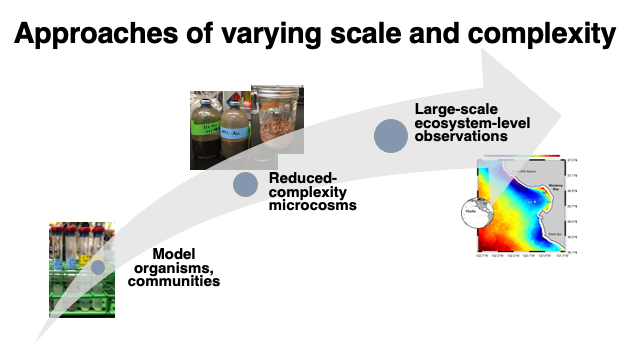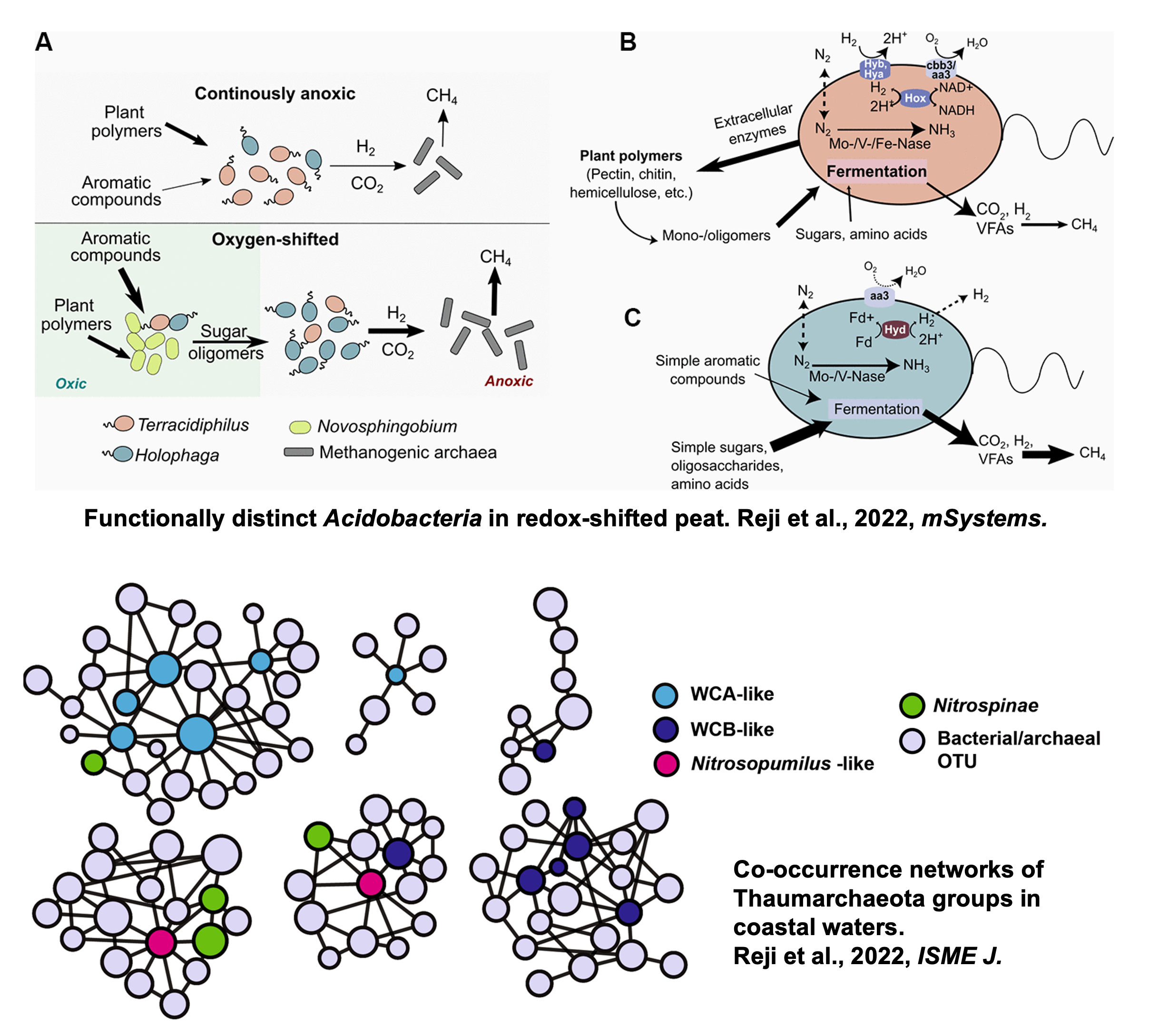Linking microbial eco-evolutionary dynamics and biogeochemical processes in a changing world
Microbial communities comprise the majority of biodiversity on earth and perform critical ecological functions that propel and maintain the planet’s life-sustaining biogeochemical cycles. The diversity of microbial life, coupled with the dynamic nature of ecosystems, creates a web of complex interactions that remain largely enigmatic.
My research seeks to develop a mechanistic understanding of microbial responses to environmental stressors and their consequences for biogeochemical processes in terrestrial and coastal systems.

To this end, I combine cutting-edge tools from microbial ecology and geochemistry, including “-omics” methods (genome-resolved metagenomics, metatranscriptomics, and targeted marker gene analyses) and geochemical measurements (process rate measurements, diverse gas chromatography techniques, etc). Using a combination of controlled perturbation experiments in the laboratory and spatio-temporally resolved field investigations, I aim to develop a predictive understanding of microbial acclimation and adaptation trajectories along ecological and geochemical gradients in a changing world.

Primary focus areas:
1. Microbial trace gas cycling in the face of natural and anthropogenic global change
Microbes play important biogeochemical roles as producers and consumers of climate active trace gases, including CO2, CH4, N2O, and H2. Mechanisms regulating the microbial cycling of these gases remain poorly understood, particularly under global change scenarios. In addition to examining such mechanistic controls on trace gas cycling, my research aims to understand the interactions between microbial functional groups that link the cycling of various climate active trace gases in terrestrial and coastal ecosystems.
2. Ecosystem implications of the generation and maintenance of microbial diversity
The link between microbial diversity and ecosystem functioning is among the biggest unknowns in microbial ecology. I am intrigued by the co-existence of microbial sub-populations in nature that diverge along ecological gradients. How is such diversity generated and maintained, particularly in geochemically fluctuating environments? How do co-occurring microorganisms of similar functional/life history strategies partition niche space? What are the functional consequences of phylogenetic and functional diversity for ecosystem functioning, and can we develop a predictive understanding of these links?
Current and Past Projects:
Effect of oxygen variability on wetland microbial methane emissions [ongoing].
Stability of the soil microbial hydrogen sink in a changing world [ongoing].
Fixed N sensitivity of free-living diazotrophs in marine sediments.
Relevant publication:
Darnajoux, R., Reji L., et al., 2022. J. Geophys. Res. Biogeosci. doi: 10.1029/2021JG006596.
Functional ecology of Acidobacteria in response to redox shifts in Sphagnum peat.
Relevant publication:
Reji L., Zhang, X. 2022. mSystems. doi: 10.1128/msystems.00055-22.
Eco-evolutionary diversification among nitrifying archaea.
Relevant publications:
Reji L., et al., 2022. ISME J. doi: 10.1038/s41396-021-01167-7.
Reji, L., Francis, C.A. 2020. ISME J. doi: 10.1038/s41396-020-0675-6.
Tolar, B. B., L. Reji, et al., 2020. Limno. Oceanogr. 65(9). DOI: 10.1002/lno.11436.
Reji, L., et al., 2020. Front. Microbiol. doi: 10.3389/fmicb.2020.01075.
Reji, L., et al., 2019. ISME J. doi: 10.1038/s41396-018-0311-x.
Reji, L., et al., 2019. Env. Microbiol. doi: 10.1111/1462-2920.14753.
